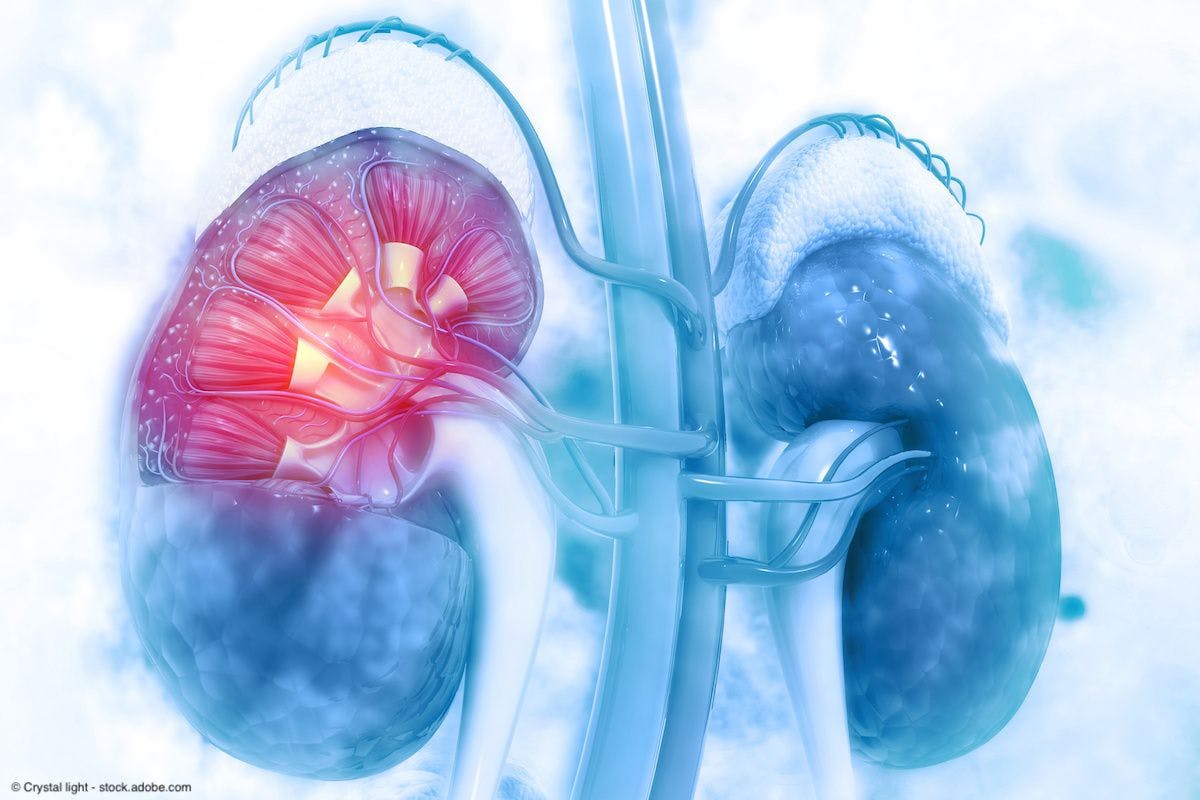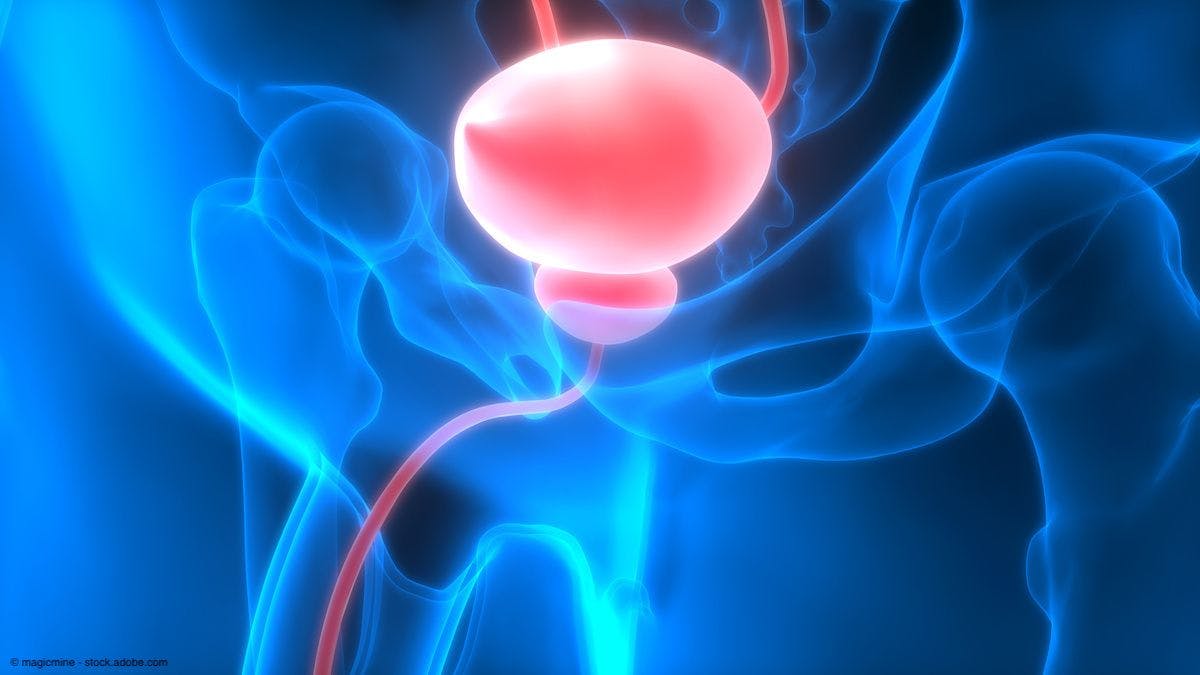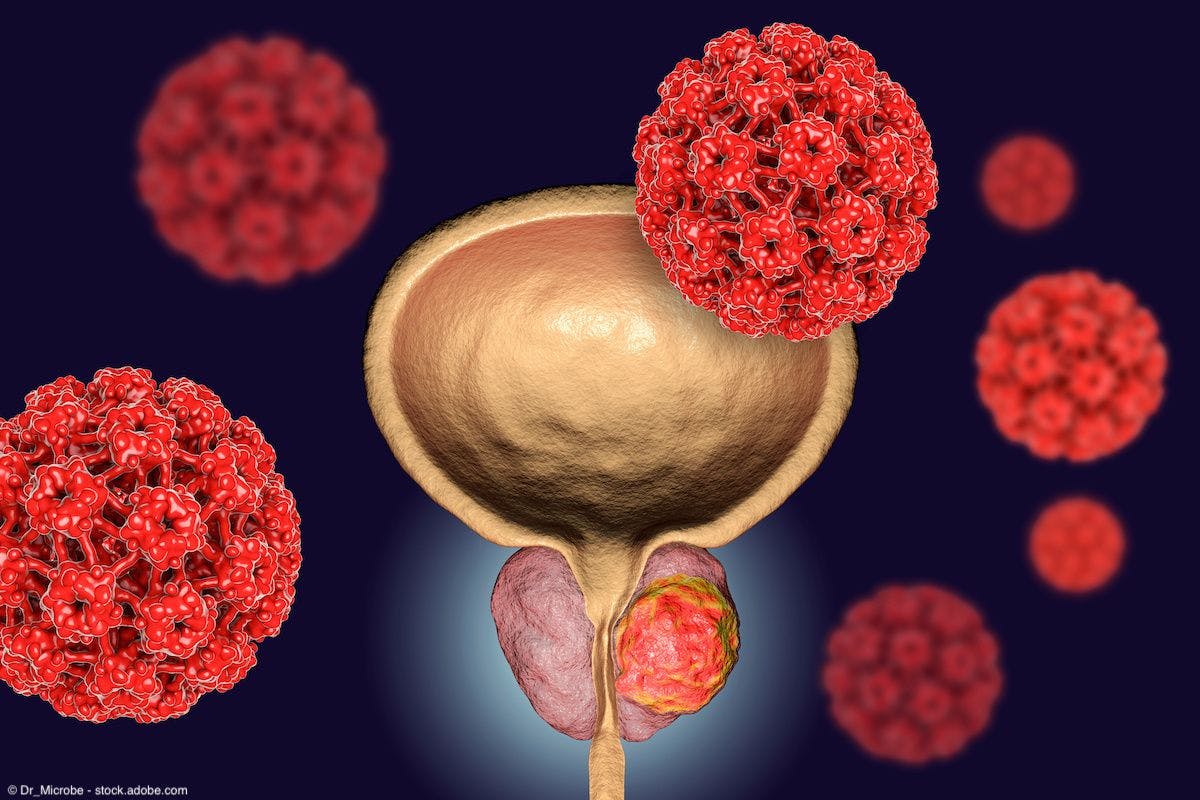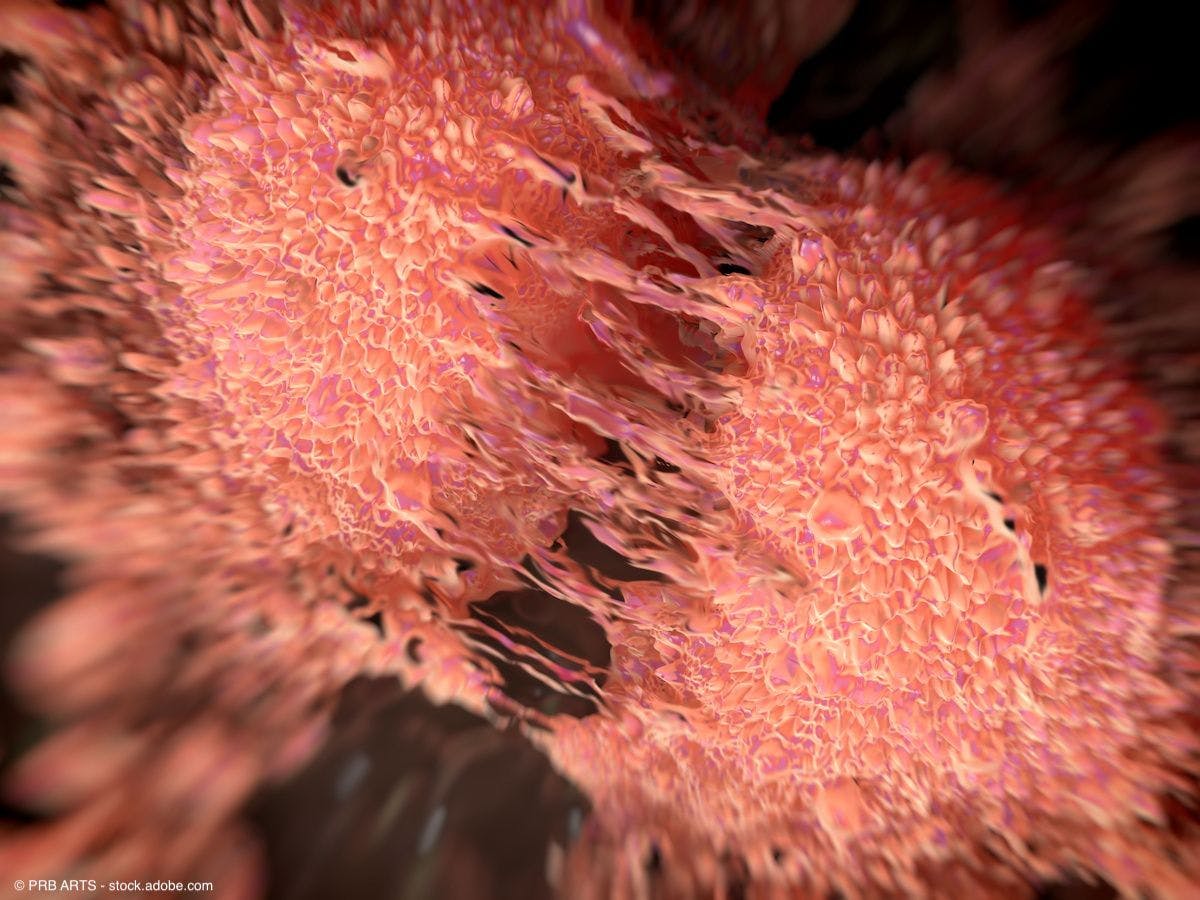Feature
Article
Urology Times Journal
Bipolar androgen therapy in prostate cancer: Current evidence and next steps
Author(s):
"We've been doing a lot of work at Johns Hopkins using high-dose testosterone therapies to treat patients with metastatic prostate cancer," says Mark C. Markowski, MD, PhD.
Mark C. Markowski, MD, PhD

In this interview, Mark C. Markowski, MD, PhD, discusses bipolar androgen therapy (BAT), including its advantages and disadvantages, trials that have evaluated the treatment, and what some next steps may include. Markowski is an associate professor of oncology at Johns Hopkins University in Baltimore, Maryland.
Could you discuss the rationale behind bipolar androgen therapy and the theoretical advantages and disadvantages of it?
We've been doing a lot of work at Johns Hopkins using high-dose testosterone therapies to treat patients with metastatic prostate cancer. It's probably been going on for more than a decade, at least with preclinical studies, and eventually moving into clinical trials. When you treat a patient with metastatic prostate cancer, the backbone of therapy is hormone suppression. We're lowering testosterone levels, trying to get them as low as possible, because testosterone fuels the cancer to grow. When we remove it from the equation, PSA levels go down and that tumor starts to shrink. As a result, patients can live a long time and do very well. But there are also can be a lot of toxicities associated with hormone-based therapies, and so trying to develop non-castrating therapies has been a goal of ours. As I said, when we lower testosterone levels in a patient with metastatic prostate cancer, the cancer will initially respond, but inevitably will become resistant—this is called castration resistance. At the end of the day, even during castration resistance, we think the cancer still wants to signal through the androgen receptor; it still wants to use that testosterone receptor to drive its growth. And it will do so in a number of different ways to get around the testosterone suppression. It can mutate the receptor, it can make more of the receptor, it could splice the receptor so that it doesn't even need testosterone to bind to it anymore, and that cancer will grow. What we've discovered is when you use high-dose testosterone therapy, for lack of a better term, there's just too much electricity flowing through that circuit, and we think we're overwhelming the cancer. By signaling through that testosterone pathway again after potentially years of experiencing a low testosterone environment, this will lead to apoptosis, cell death, and tumor regression. And so, we're trying to take advantage of how it becomes resistant to castration and then really whacking that cancer down by giving it high-dose testosterone therapy that is just too much for the cancer to handle.
What trials of BAT have been conducted to date?
We've conducted a number of clinical trials over the years. Initially, we did pilot studies, so very small numbers of patients to test for safety. We’ve been treating metastatic prostate cancer with testosterone suppression for the past 80 years. So, when you propose using high-dose testosterone therapies, it can be a bit alarming to move it forward in patients. We did an initial study with etoposide and bipolar androgen therapy. In this trial, it looked like the testosterone therapy by itself worked such that chemotherapy was not necessary. We subsequently moved on to doing different groups of patients, such as patients at different stages of their cancer care. By testing bipolar androgen therapy before and after different novel androgen receptor targeting therapies, we have begun to tease out where bipolar androgen therapy may fit in the treatment paradigm for patients with metastatic prostate cancer? Is it after abiraterone [Zytiga]? Is it after enzalutamide [Xtandi]? After chemo? Where should we employ this kind of testosterone therapy? These questions remain unanswered, but we are getting closer. The largest clinical trial to date was the TRANSFORMER study [NCT02286921], which was a randomized phase 3 study for patients with metastatic castration-resistant prostate cancer after having cancer progression on abiraterone. Patients were randomized to the bipolar androgen vs enzalutamide. The primary end point was radiographic progression-free survival. What we learned from that study was that bipolar androgen therapy certainly works on its own. We can induce clinical responses, PSA decreases, and tumor regression. But when you compare them head-to-head, the results look similar with the enzalutamide. Enzalutamide had similar response rates and a similar radiographic progression-free survival compared to bipolar androgen. It was somewhat disappointing that the primary end point was not met, but when we started to look at secondary end points, we began to better understand that bipolar androgen may prime the tumor to respond to the next line androgen receptor inhibitor. It's not only that the bipolar androgen may work on its own. But it's also that the testosterone therapies may sensitize the patients to other novel androgen receptor targeted therapies. I think when we were designing the TRANSFORMER study, we were looking at testosterone by itself vs enzalutamide by itself. But when we looked at the data, those patients that got testosterone then crossed over to enzalutamide did very well. And there was actually an overall survival benefit when we looked at patients receiving bipolar androgen followed by enzalutamide vs those who just received enzalutamide by itself. That was a secondary end point, so it wouldn't change the standard of care, but at least it was cluing us in to the mechanism here, that it may not just be the bipolar androgen therapy that works, even though it does in certain patients; they do very well. But when they have cancer progression on the testosterone, we really can take advantage of that sensitization effect with next line treatment And so, we may want to prime patients between oral AR-targeted therapies with the testosterone therapy, and I think that was the lesson that we learned from TRANSFORMER.
What disease states should be considered for bipolar androgen androgen therapy?
I think we're still working on that and trying to identify where bipolar androgen therapy would be best suited. We've done a number of trials; like I said, the TRANSFORMER study. We also just completed the COMBAT study [NCT03554317], which was a combination of bipolar androgen with the immune checkpoint inhibitor nivolumab [Opdivo]. The eligibility for the COMBAT study was that patients had to have cancer progression on at least 1 AR-targeted therapy, but there was no limit in number of therapies. And so, we actually got a very heterogeneous population of patients in terms of treatment; some were early phase, early in their clinical disease course, and some were heavily pretreated with a number of oral AR-targeted therapies and even chemotherapies. And so, we got to look at some of the response rates to testosterone therapy in a bunch of different clinical states of prostate cancer. There did not appear to be an advantage of treating early vs later; it seemed like if the testosterone was going to work, it was going to work for however long it was going to work for, irrespective of the number of therapies. So, it's not exactly clear where we should implement it. It seems to work reasonably well wherever we choose to use it. But I think, in a little bit more general terms, mixing in the bipolar androgen after an AR-targeted therapy will sensitize patients to that next line of AR-targeted therapy. We've learned over the years that trying to move from an oral AR-targeted therapy like abiraterone straight to enzalutamide is not the best treatment approach. There should be something in the middle there, whether it's chemotherapy or something else. But that may be a spot where testosterone therapies would become useful to see if we can get you to sensitize to that second AR-targeted therapy.
What impact does prior treatment have on the success of BAT?
We're trying to understand that. Conventional wisdom would suggest that the harder you've been targeting that AR-targeted pathway, the more likely you may be to benefit from the testosterone. So, the more pressure you put on the androgen receptor over time, perhaps we can take advantage of giving the bipolar androgen therapy, and that's been our hypothesis. We have not found clear, convincing evidence that the line of AR-targeted therapies will either improve or worsen outcomes. We're looking into that. What we're trying to do now is pool all the patients that we've treated over a number of clinical trials and even off clinical trials to answer this question. If we have 500 to 700 patients with various degrees of prior treatment, we may be able to at least retrospectively get a signal to say, which patients responded best to bipolar androgen. We're trying to figure that out. But I think right now, that's unclear, and we don't have that answer.
Are there any predictors of response to BAT?
That's the million-dollar question right now. We're going over the data from the COMBAT study. The best part about that study is that we took serial biopsies from patients, so we have actual tissue that we can study from before testosterone and during testosterone. We have serial blood draws; we have a lot of time points where we're collecting specimens for patients to try to answer that question. Dr. Laura Sena, Dr. David Sanin, and others have begun to analyze some of that data. I think it's no surprise that when we study the androgen receptor and androgen receptor signaling, we're starting to see a pattern of who's going to respond to bipolar androgen. It’s not just in patients who have the highest level of androgen receptor -That doesn't appear to be the case. But the data suggest that those patients that have high signaling through the androgen receptor - so if you can give them a score for androgen signaling, those that had the highest androgen receptor score—had the best response to testosterone. From a practical perspective, that makes sense; those patients who are heavily dependent on the androgen receptor pathway may see the most benefit using a drug that's clearly hitting the androgen receptor pathway. I think that's what we found so far—that high AR signaling will predict response. We're also finding that bipolar androgen therapy can reduce MYC expression. MYC is a common oncogene in many cancers, not just prostate cancer. We found that those patients who respond deeply to bipolar androgen had very significant declines in MYC protein expression. There are still some pieces to put together there. So I think if I'm going to answer this a little bit more succinctly, patients with tumors that had high AR signaling did better on bipolar androgen, and those that we found had the most robust MYC decrease in protein expression also did very well. The relationship between AR and MYC is there, and we're trying to explore that further.
Why do you think that BAT hasn't received more attention?
I think it's received attention. I think people are interested in the topic. The beauty of bipolar androgen is that it's relatively cheap. Injections of testosterone are somewhere in the range of $20 to $30 a month. For cancer treatments, that's remarkably inexpensive. I think there's a cost effectiveness to it. I think it's very safe. And then, in terms of the side effects of bipolar androgen, many of the "side effects” are actually positive changes. Hot flashes go away, they have more energy, they get more libido, they can have erections, and this is all during the course of received treatment for metastatic prostate cancer. I think people are interested in it based on the quality-of-life perspective, the cost efficiency of it. But I also think providers need to see concrete data showing that bipolar androgen is superior to whatever cancer treatment that we're comparing it to. I think each trial that we do, we're clearly seeing signal and the treatment seems safe. What we're still trying to identify is what's the right sequence so that we can inform treatment. That kind of parlays into ongoing clinical trials with bipolar androgen. And I think the one trial that I will highlight is the STEP-UP trial [NCT04363164]. This trial involvespatients with metastatic castration-resistant prostate cancer who received prior treatment with abiraterone. They get randomized to 1 of 3 groups. They can go into the enzalutamide-only group, so they go straight from abiraterone to enzalutamide. That was 1 of the control groups in the TRANSFORMER study. And then there are 2 experimental arms. In 1 of these arms, patients get bipolar androgen therapy until progression, and then enzalutamide until progression. The third arm is a kind of flip-flop; patients receive bipolar androgen therapy for a period of time, then enzalutamide, then bipolar androgen and back to enzalutamide. The hope here is that this trial is going to be a more definitive study to really show the benefit of bipolar androgen therapy because TRANSFORMER didn't build that second piece, the enzalutamide treatment, into the primary end point. So if STEP-UP is positive and shows a clear difference vs enzalutamide alone, then I think the way patients with metastatic prostate cancer are treated is going to change. Bipolar androgen will get more attention, and more people are going to do it. I think the other part of this conversation is that there is some concern about providers and patients doing testosterone therapy off label and on their own without clear clinical guidance. It's great to get attention for your work, but we're also a bit concern that providers are just going to do it in patients because testosterone is FDA approved affordable. But we worry about safety and monitoring. How do you follow those patients? It can be a little tricky because we're using testosterone. Testosterone can signal through AR, and those cancers can make more PSA. Well, that rise in PSA may not reflect tumor growth, so do you manage that in patients? It becomes a little bit tricky. We've gotten good experience with managing these patients, like I said, over the past 10 years, sowe kind of know what patterns we're looking for. Whereas if you don't have experience, we just worry about safety. It's a double-edged sword. It's nice to get attention; I think it is getting attention. But we also worry about people going out and doing it without the proper guardrails in place.
What are the next steps regarding BAT?
As we learn more about mechanism, which we're understanding from the COMBAT study, we're trying to find logical partners to put with bipolar androgen therapy. I think there are 2 directions that we're going in. One is bipolar androgen by itself and the sensitization to other AR therapies story, and I think STEP-UP is going to tell that story. And then there's another direction that is somewhat open ended—what are logical partners to pair with bipolar androgen? How do we make bipolar androgen therapy work better? Can we figure out a way to keep MYC levels down for longer? Can we pair testosterone with some MYC inhibitor or some suppressor of MYC expression to make it work better? It's possible. Are there other logical pairs of treatments that go with bipolar androgen? Yes, absolutely, and we're trying to figure those out as we go. I think it's a 2-pronged approach. One is the conventional approach, which is STEP-UP. And then as we dig through the data from our prior studies to say what makes sense to pair with bipolar androgen? We are working those out right now.































